Subtotal: £12.58
6 X 100G Red Mosquito Larvae ( Size) – 100 g Flash-Frozen Natural Fish Food, Perfect Feeding Solution for Community Tanks, Enhancing Your Tropical Aquarium Experience, Nourishing Diet for Thriving Tropical Fish
£20.49 Original price was: £20.49.£17.00Current price is: £17.00.
Welcome these beautiful tropical fish with our 6 X 100G Red Mosquito Larvae, a high-protein frozen fish food that enhances the health and grace of your ornamental fish. Ideal for community tanks, this natural fish food supports vibrant colors and flourishing movement, ensuring a thriving aquatic environment.
Nutritional Overview
Essential Care Guide for 6 X 100G Red Mosquito Larvae
| Optimal Living Conditions | |
|---|---|
| Water Temperature | 24-27°C (75-81°F) |
| pH Level | 6.5-7.5 |
| Water Hardness | 4-12 dKH |
| Minimum Tank Size | 80L (20 gal) |
| Salinity | Freshwater |
| Care Level | Beginner Friendly |
Positive Information
Care level: Easy
Feeding Specifications
When it comes to feeding your fish, portion sizes and frequency are crucial for maintaining a healthy aquarium environment. For Red Mosquito Larvae, it is recommended to provide small amounts that your fish can consume within a few minutes. This prevents overfeeding and helps maintain water quality. A general guideline is to feed your fish 2-3 times a day, adjusting the quantity based on the size and number of fish in your tank. For larger fish, you may increase the portion size slightly, while smaller fish will require less. It is important to observe your fish during feeding times to ensure they are consuming the food and not leaving excess that could decay and harm water quality.
Important Feeding Note
Always ensure to thaw the frozen larvae before feeding. This can be done by placing the blister pack in warm water for a few minutes. Never feed your fish frozen food directly as it can cause digestive issues.
Suitable Fish Species
Red Mosquito Larvae are suitable for a variety of tropical fish species, making them a versatile addition to your fish feeding regimen. This food is particularly beneficial for medium to large fish, including popular species such as Tetras, Gouramis, and Cichlids. These fish thrive on high-protein diets, and the inclusion of Red Mosquito Larvae can enhance their color and overall health. Additionally, these larvae are well-received by ornamental fish, which often require specialized diets to maintain their beauty and vitality. By providing a diverse diet that includes these larvae, you can ensure that your fish friends receive the necessary nutrients for optimal growth and development.
Beginner Friendly
This food is easy to use and suitable for both novice and experienced aquarists.
Nutritional Benefits
The nutritional benefits of Red Mosquito Larvae extend beyond mere sustenance; they play a crucial role in the health and vitality of your fish. The high protein content supports muscle development and growth, which is particularly important for juvenile fish. Additionally, the fatty acids found in these larvae contribute to improved energy levels and overall well-being. Regular feeding can also enhance the immune system of your fish, making them more resilient to diseases. Furthermore, the natural pigments present in the larvae can enhance the coloration of your fish, making them more vibrant and visually appealing in your aquarium. By incorporating Red Mosquito Larvae into your fish’s diet, you are providing a nutrient-rich food source that promotes long-term health and vitality.
Water Quality Impact
Monitor water quality closely when feeding high-protein foods like Red Mosquito Larvae. Excess food can lead to increased ammonia levels, which can harm your fish.
Feeding Instructions
Proper feeding techniques are essential to ensure that your fish receive the maximum benefits from Red Mosquito Larvae. Start by thawing the frozen larvae completely, as feeding them in their frozen state can cause digestive issues. Once thawed, use a net to portion out the desired amount based on the number and size of fish in your aquarium. Disperse the larvae evenly across the tank to encourage natural foraging behavior among your fish. This not only stimulates their hunting instincts but also reduces competition for food. Observe your fish during feeding to ensure they are consuming the larvae and adjust the portion sizes as necessary to prevent overfeeding. Remember, a well-fed fish is a happy fish, and proper feeding practices contribute to a thriving aquarium environment.
Storage Guidelines
To maintain the quality and freshness of Red Mosquito Larvae, proper storage is crucial. Keep the blister packs in the freezer until you are ready to use them. Avoid repeated thawing and refreezing, as this can compromise the nutritional integrity of the larvae. When you open a blister pack, use the contents within a few days to ensure optimal freshness. If you have leftover larvae after feeding, discard them rather than refreezing, as this can introduce bacteria and spoil the remaining food. By following these storage guidelines, you can ensure that your fish receive the highest quality nutrition possible, supporting their health and well-being.
Freshness Indicator
Always check the expiration date on the packaging to ensure you are feeding your fish the freshest food.
Ingredient Analysis
Red Mosquito Larvae are sourced from clean, natural habitats, ensuring that they are free from harmful chemicals and pollutants. The larvae are harvested at their peak nutritional value and flash-frozen immediately to lock in freshness. This process preserves the essential nutrients that fish need for optimal health. The primary ingredient in this product is the larvae themselves, which are rich in protein and fatty acids. Additionally, the absence of fillers or artificial additives makes this food an excellent choice for aquarists looking to provide their fish with a natural diet. By choosing high-quality ingredients, you can be confident that you are providing your fish friends with the best possible nutrition.
Health Benefits
The health benefits of incorporating Red Mosquito Larvae into your fish’s diet are numerous. The high protein content supports muscle development and overall growth, which is particularly important for juvenile fish. Additionally, the essential fatty acids found in these larvae contribute to improved energy levels and overall vitality. Regular consumption of Red Mosquito Larvae can also enhance the immune system of your fish, making them more resilient to diseases and stress. Furthermore, the natural pigments present in the larvae can enhance the coloration of your fish, making them more vibrant and visually appealing in your aquarium. By providing a diet rich in nutrients, you can help ensure that your fish live long, healthy lives.
Special Dietary Needs
Consider the specific dietary needs of your fish species when incorporating new foods into their diet.
Supplement Integration
Integrating Red Mosquito Larvae into your fish’s diet can be done seamlessly by combining them with other high-quality fish foods. For optimal nutrition, consider alternating between different types of food, such as flakes, pellets, and freeze-dried options. This variety not only keeps your fish engaged during feeding times but also ensures they receive a well-rounded diet. It is important to monitor your fish’s response to new foods and adjust their diet accordingly. By providing a diverse diet, you can help prevent dietary deficiencies and promote overall health in your aquatic companions.
Expert Recommendations
For the best results when feeding Red Mosquito Larvae, it is recommended to consult with experienced aquarists or fish care experts. They can provide valuable insights into the specific dietary needs of your fish species and help you develop a feeding regimen that supports their health and well-being. Additionally, consider keeping a journal to track your fish’s health and behavior in response to different foods. This can help you identify any dietary preferences or sensitivities your fish may have, allowing you to tailor their diet for optimal results. By taking a proactive approach to your fish’s nutrition, you can ensure they thrive in their aquatic environment.
Nutritional Science
The science behind fish nutrition is complex, and understanding the nutritional needs of your fish can greatly impact their health and longevity. Research has shown that high-protein diets, such as those provided by Red Mosquito Larvae, are essential for the growth and development of fish. The fatty acids found in these larvae play a crucial role in energy production and overall vitality. Additionally, the vitamins and minerals present in the larvae contribute to immune function and disease resistance. By staying informed about the latest developments in fish nutrition, you can make educated decisions about the best feeding practices for your aquatic companions, ensuring they receive the highest quality care possible.
Water Quality Parameters
Optimal Range
24-27°C
6.5-7.5
0 ppm
Caution Zone
22-24°C or 27-29°C
6.0-6.5 or 7.5-8.0
0.25-0.5 ppm
Danger Zone
29°C
8.0
>0.5 ppm
Monitoring Tip: Test water parameters weekly and perform regular water changes to maintain optimal conditions for your aquatic friends!
Frequently Asked Questions
Q: How much Red Mosquito Larvae should I feed my fish?
Feeding quantities of Red Mosquito Larvae depend on the size and number of fish in your aquarium. A general rule of thumb is to feed an amount that your fish can consume within 2-3 minutes. This prevents overfeeding, which can lead to water quality issues. For small fish, a pinch of larvae is typically sufficient, whereas larger fish may require a slightly larger serving. Observe your fish; if they are eagerly consuming the food, you are likely providing an appropriate amount. Adjust as necessary based on their feeding behaviour and overall health.
✓ Expert Tip
Consider varying your fish’s diet with other food types to ensure a balanced nutrition.
Q: How frequently should I feed Red Mosquito Larvae?
The frequency of feeding Red Mosquito Larvae can vary based on the species of fish you keep. Generally, it is advisable to feed your aquatic companions once or twice a day. Young, growing fish may benefit from more frequent, smaller feedings, whilst adult fish often thrive on one feeding per day. It is crucial to monitor your fish’s health and adjust feeding times accordingly. Additionally, ensure that any uneaten food is removed promptly to maintain water quality.
✓ Expert Tip
Incorporate a variety of foods into your fish’s diet to promote optimal health and colour enhancement.
Q: Which fish species are compatible with Red Mosquito Larvae?
Red Mosquito Larvae can be an excellent food source for a variety of freshwater fish species, particularly those that thrive on a protein-rich diet. Species such as Betta fish, Tetras, and Guppies are known to relish these larvae. However, it is essential to ensure that the size of the larvae is appropriate for the mouth size of your fish. Avoid feeding them to very small fish that may struggle to consume them properly. Always observe your fish’s behaviour during feeding to ensure they are benefiting from this food source.
✓ Expert Tip
Consider the natural feeding habits and preferences of your fish when selecting their food.
Q: How should I properly store Red Mosquito Larvae?
To maintain the freshness of your Red Mosquito Larvae, it is crucial to store them correctly. Keep the larvae in the freezer and only thaw out what you intend to use for feeding. Once thawed, do not refreeze the leftovers, as this can diminish the nutritional value and lead to spoilage. Store them in an airtight container to prevent freezer burn and maintain their quality. Always check the expiration date on the packaging to ensure you are feeding your fish the best possible nutrition.
✓ Expert Tip
Using a dedicated freezer container can help keep track of your fish food inventory.
Q: Will Red Mosquito Larvae affect my water quality?
Red Mosquito Larvae can contribute to water quality issues if overfed. Uneaten food can decompose and release harmful substances into the water, leading to elevated ammonia and nitrite levels. To prevent this, monitor your fish’s feeding habits and remove any uneaten larvae after feeding sessions. Regular water changes and maintaining proper filtration are essential to keep your aquarium environment healthy. Keeping a close eye on water parameters will ensure that your aquatic friends thrive.
✓ Expert Tip
Invest in a reliable water testing kit to monitor ammonia, nitrite, and nitrate levels regularly.
Q: Is Red Mosquito Larvae suitable for breeding fish?
Yes, Red Mosquito Larvae can be particularly beneficial for breeding fish. The high protein content supports the growth and development of fry, providing them with the necessary nutrients during their early life stages. Moreover, the small size of the larvae makes them an ideal food source for newly hatched fry. However, ensure you are offering appropriately sized portions to prevent any risk of choking. Incorporating these larvae into the diet of breeding pairs can also enhance their health and spawning success.
✓ Expert Tip
Consider supplementing with specialised breeding foods to maximise the health of both parents and fry.
Q: How does Red Mosquito Larvae support fish health and growth?
Red Mosquito Larvae are an excellent source of protein, essential fatty acids, and vitamins, all of which are critical for the health and growth of fish. The protein aids in muscle development, while the fatty acids contribute to overall vitality and immune system support. Regular inclusion of these larvae in your fish’s diet can promote vibrant colours and robust health. Additionally, they are easily digestible, ensuring that your fish can efficiently absorb the nutrients they provide.
✓ Expert Tip
Rotate food types regularly to ensure a well-rounded diet that meets all nutritional needs.
Q: How do I transition my fish to Red Mosquito Larvae?
When introducing Red Mosquito Larvae to your fish’s diet, it is advisable to do so gradually. Start by mixing a small amount of the larvae with their current food. Observe how they react; if they consume it eagerly, you can slowly increase the proportion of larvae over several days. This gradual transition helps prevent digestive issues and allows your fish to adapt to the new food source. Be attentive to their health and feeding behaviour during this period.
✓ Expert Tip
Observe your fish for any signs of stress or refusal to eat during the transition.
Q: What ingredients are contained in Red Mosquito Larvae?
Red Mosquito Larvae consist primarily of natural, high-quality protein, essential fatty acids, and vitamins. These components are vital for promoting health, growth, and colouration in fish. The larvae are flash-frozen to preserve their nutritional integrity, ensuring that your fish receive the maximum benefits. As a natural food source, they do not contain artificial additives or fillers, making them a wholesome choice for your aquatic companions.
✓ Expert Tip
Always check the packaging for specific ingredient information and nutritional analysis.
Q: Can Red Mosquito Larvae enhance fish colouration?
Yes, feeding Red Mosquito Larvae can enhance the colouration of your fish. The natural pigments present in the larvae can help accentuate the vibrant colours of your aquatic companions, particularly in species known for their vivid hues. Regular consumption can lead to improved colour intensity and overall appearance. However, it is important to pair this food with a varied diet to ensure comprehensive nutritional support.
✓ Expert Tip
Consider supplementing with colour-enhancing pellets or flakes for optimal results.
Q: How does Red Mosquito Larvae support digestive health?
Red Mosquito Larvae are easily digestible, making them a suitable food choice for fish of various sizes. Their natural composition supports healthy digestion and nutrient absorption, essential for overall fish wellness. Providing a diet that includes these larvae can promote regular bowel movements and prevent digestive issues, which are common in fish that consume harder-to-digest foods. Observing your fish’s faeces can also give you insight into their digestive health.
✓ Expert Tip
Mixing in some fibre-rich foods can enhance digestive health further.


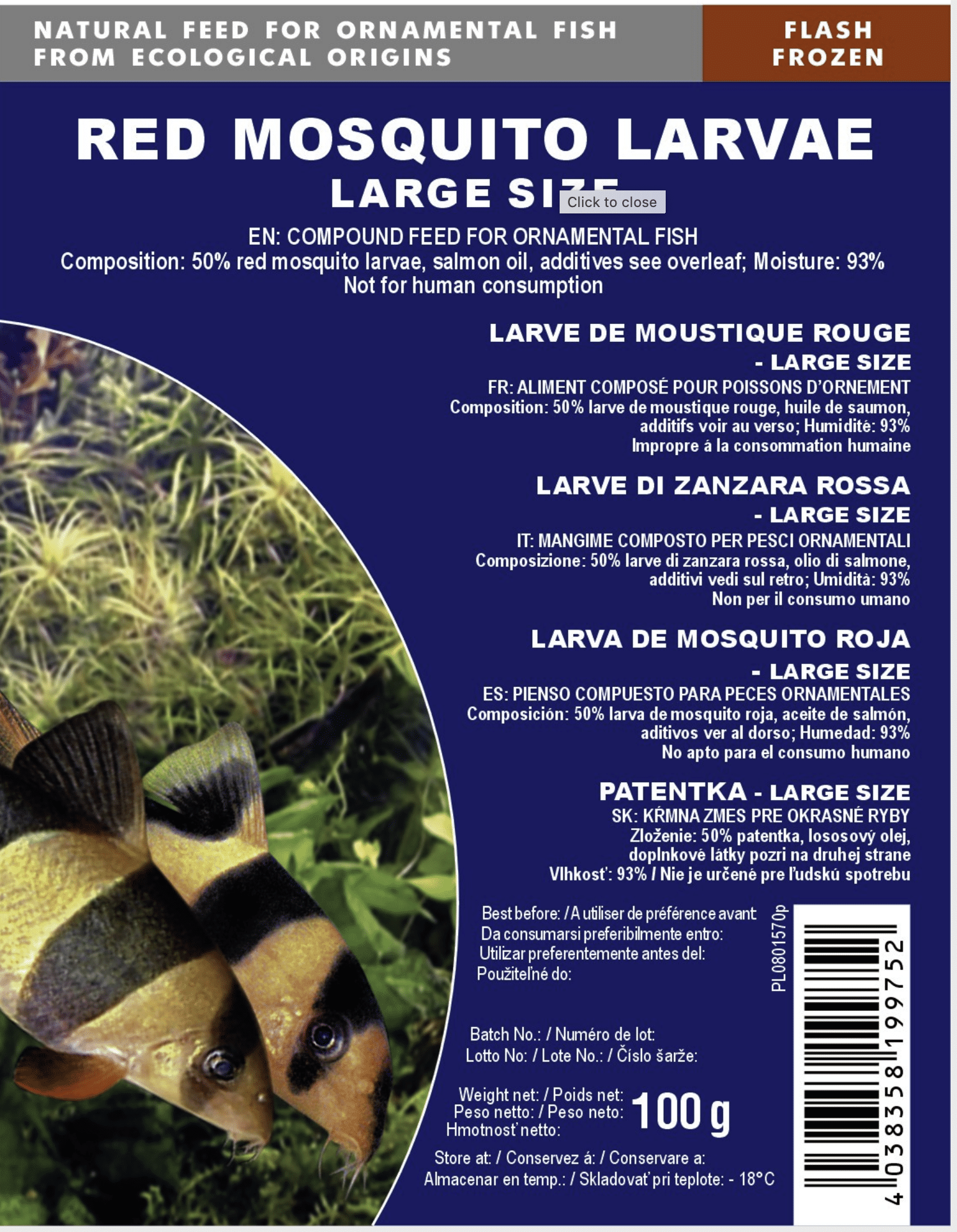
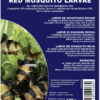


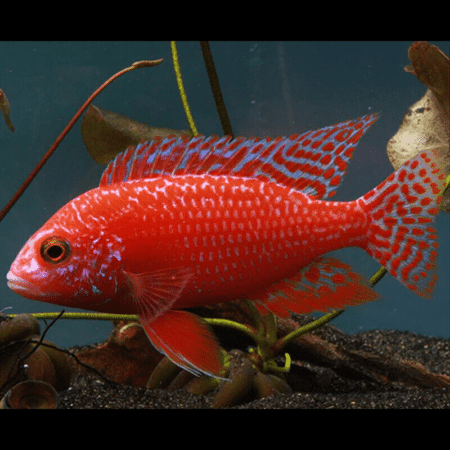

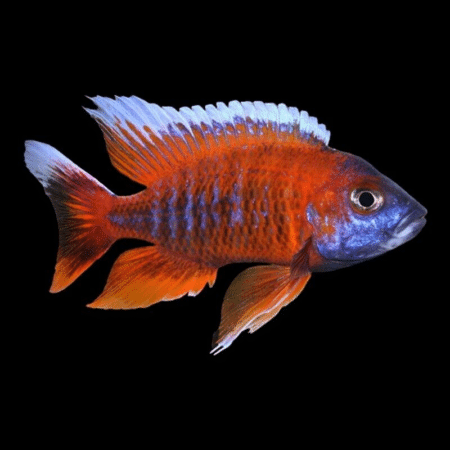
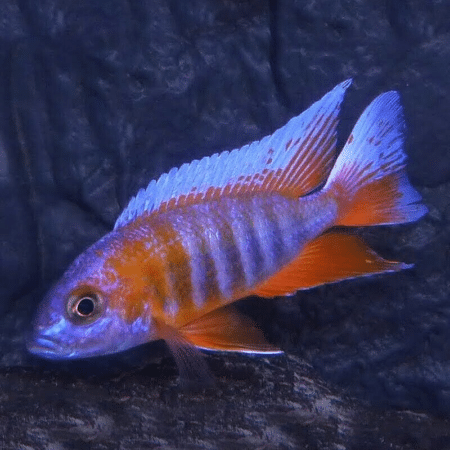


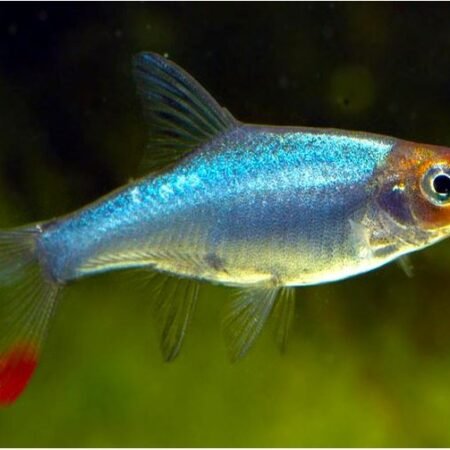
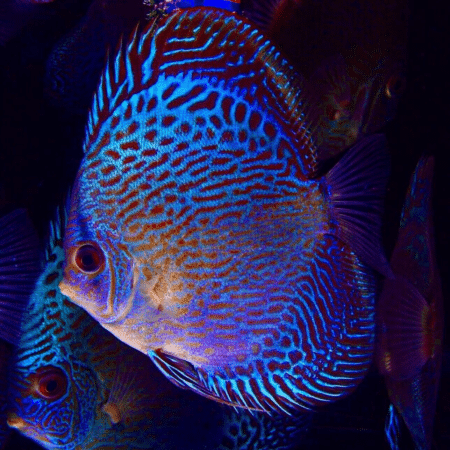
Emily Carter (verified owner) –
As a passionate tropical fish parent, I’ve always prioritized quality nutrition for my aquatic friends. I recently purchased the 6 x 100G Red Mosquito Larvae and I couldn’t be happier! After just a week of feeding these to my fish, I’ve seen incredible improvements in their vitality and color. The larvae are a great size and seem to be a perfect match for my larger guppies and tetras.
What I love the most is that these are flash-frozen, preserving their nutritional value beautifully. Unlike some alternatives I’ve tried in the past, which often left my fish uninterested, these larvae are eagerly devoured by my little ones! I also appreciate how they come in convenient blisters, making it easy to feed without mess.
One minor concern is that they can be a bit pricey compared to other frozen options, but the quality and nutrition they offer is absolutely worth it. I highly recommend these for anyone looking to enhance their fish’s diet. Your tropical fish will thank you, and you’ll love seeing their happiness in your aquarium!
Emily Carter (verified owner) –
I recently purchased the 6 x 100g Red Mosquito Larvae, and I can’t express how delighted I am with this product! My community tank, which houses various tropical fish, has never looked happier. After just one week of using this flash-frozen natural fish food, I noticed a remarkable increase in activity and vitality among my fish. They dart around, eagerly hunting for the larvae, and it feels great to see them so engaged. This food has the perfect size and texture for both my small tetras and my larger gouramis.
I’ve tried other frozen foods before, but this one stands out because it’s so fresh and the fish absolutely love it. It’s comforting to know I’m providing them with a nutritious and high-quality treat that supports their health and happiness.
One small note—be sure to thaw it properly before feeding; it makes a big difference in presentation and palatability. I highly recommend this product for anyone with ornamental fish looking to enrich their aquarium experience. I will definitely be stocking up on this again soon!